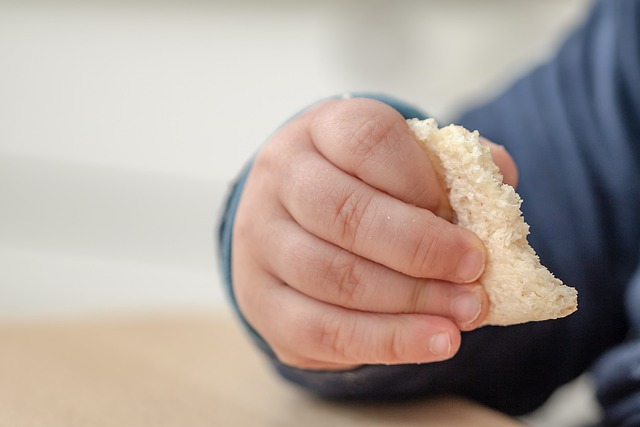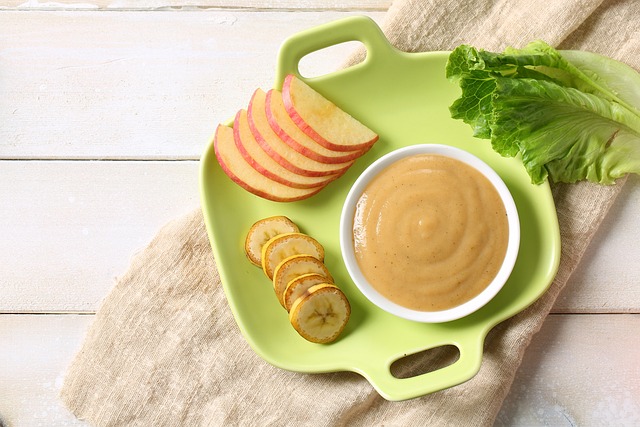The Best Organic Baby Foods of 2023
Best Organic Baby Foods-Choose from a variety of organic foods for your baby. These healthy and easy to digest foods are rich in nutrients and will give kids a head start against diseases. Organic baby food is also ideal for pregnant women who are looking for the best nutrition.

Organic baby food is the future of healthy and nutritious food. It’s a way to give your child a head start in life by providing them with the best nutrition possible.
Best Organic Baby Foods
- Cow’s milk
Cow’s milk is rich in protein and fat and helps build strong bones and teeth. It’s also loaded with B12, vitamin D, riboflavin, zinc, iron and sodium. Research shows that cow’s milk promotes healthy brain and nervous system development in infants.
- Yogurt
Yogurt contains live cultures that make it great for babies’ digestive systems. In addition, yogurt helps develop strong bones and teeth. One cup of plain yogurt contains about 100 mg of calcium, which is a good amount for a baby’s daily intake.
- Cheese
Cheese provides protein, calcium, vitamins A and K, iron, and phosphorus. If cheese isn’t eaten regularly then a baby may not get enough calcium. Most cheeses are high in protein and low in lactose. There are many varieties of cheese out there, each with their own unique flavor.
- Nuts
Nuts provide protein and some fats along with vitamins A & E, selenium, folate, pantothenic acid and copper. To add variety to your diet, try different kinds of nuts! Almonds, cashews, hazelnuts, pistachios, walnuts and Brazil nuts are all excellent choices.
- Eggs
Eggs are packed full of nutrition, including choline, biotin, vitamin D, lutein, retinol, riboflavin and omega-3 fatty acids. They also have lots of protein, making them perfect for breakfast. A single large egg (about 6 ounces) contains almost 300 calories and 10 grams of protein.
- Salmon
Salmon is a lean meat but it’s rich in omega-3 fatty acids, which help protect the heart and brain. Add salmon to your baby’s diet to ensure they’re getting plenty of these heart-healthy fats.
- Sausage
Sausages are filled with natural preservatives and antioxidants that protect against cancer and cardiovascular disease. Try adding sausage to your baby’s meals and snacks for a boost of iron, folic acid, fiber, thiamine, niacin, and riboflavin.
- Breast milk
Breast Milk is recommended for baby’s first food. It contains antibodies, vitamins, enzymes and fat-soluble elements that make it valuable for infants’ growth. When breastfeeding babies, moms provide them with breastmilk exclusively for approximately six months after birth.
While they don’t need to receive solid foods, it’s still important for them to get some nutrition from the mother’s body.
- Soy formula
Soy formulas comes in several forms including powdered, liquid, and soybean oil based products. Soy infant formula is usually safe, low cost, and high calorie when compared to cow milk. However, soy formulas contain lactose (a natural sugar), salt, and artificial ingredients. These factors should be taken into account before choosing a formula for your child.

- Homemade foods
Homemade foods are always best for babies. Babies love the taste of homemade foods and have less risk of allergies. You can cook with fresh fruits, vegetables, beans, meat, eggs, nuts, seeds, grains and even yogurt.
- Whole wheat flour
Whole wheat flour is rich in fiber, protein, iron, zinc, and B vitamins. Flour can be enriched with vitamin B12, folic acid, DHA and ARA which are necessary for brain development and eyesight. Whole wheat flour is also considered healthier than refined flours.
- Fruits
Fruits are nutritious and delicious for babies. The sweetness of fruit helps stimulate their taste buds. Also, they help prevent cavities and tooth decay. Try to choose a variety of different kinds of fruits.
- Vegetables
Vegetables also have a great deal of nutritional value. They are good for babies’ immune system and digestive systems. Try to use colorful vegetables as much as possible.
- Whole-grain cereals
Whole grain cereals are not only nutritionally sound, but also they are easier to digest. To ensure that whole-grains go down smoothly, mix them with water instead of milk or juice.
* Baby Veggies
Vegetables are great for baby’s diet! Because they are loaded with vitamins, minerals, and fiber, veggie-rich diets have been linked to healthier brains, bones, skin, and immune systems. When choosing vegetables for your baby’s menu, keep in mind how nutritious each type of food actually is. Here are some tips for picking out the best veggies for babies.
*Choose a variety of colors
Most fruits and vegetables come in two basic color types – red, orange, yellow, green, blue, purple, brown, white, black – but babies don’t really notice these differences yet (or at least not until they’re about 2 years old).
Try offering carrots, broccoli, peas, tomatoes, spinach, sweet potatoes, zucchini, squash, kale, cauliflower, broccoli, mushrooms, peppers, onions, apples, oranges, bananas, strawberries, leeks, collard greens, okra, raspberries, beans, eggs, and nuts as part of their meals. This helps them get the full benefit of all the nutrients in those foods.
*Pick organically grown produce
You may think that because the produce is organic, it offers a safer alternative than conventional options. In fact, organic crops tend to carry higher levels of pesticides and herbicides, which could pose a threat to your child’s long-term health. To ensure your baby’s safety, choose only organic produce that comes from farms where crops aren’t irrigated using toxic chemicals.
*Opt for frozen vegetables
Frozen vegetables that are packed with fiber and low in sodium are perfect for toddlers who love to eat vegetables but struggle to chew. Look for products that list no artificial flavors or preservatives, and read ingredient labels to make sure that none of the ingredients are listed as carcinogenic (a substance that causes cancer) or endocrine disruptors (substances that interfere with hormone function). Frozen vegetables are safe to eat before age 1.
*Add fish and shellfish
Fish and shellfish are high in omega-3 fatty acids, which help promote brain and eye development during early childhood. Try serving flounder, salmon, shrimp, crabmeat, clams, mussels, oysters, tilapia, sardines, cod, tuna, scallops, trout, crayfish, lobster, prawns, and crawfish. All varieties of fish are good choices except shark, swordfish, king mackerel, tilefish, grouper, and albacore.
*Avoid hot dogs
Hot dogs are made by mixing lean ground beef with salt, corn syrup, and other additives. While hot dogs are high in protein, they are also high in fat and sodium. Serve hot dogs once or twice a month to minimize exposure to unhealthy fats and sodium, and limit consumption to less than six per week.
*Eat leafy greens
Leafy greens like kale, lettuce, romaine, spinach, chard, collards, bok choy, arugula, turnip greens, mustard greens, watercress, parsley, basil, cilantro, tarragon, dill, mint, fennel, celery, cucumber, radishes, cabbage, onion, garlic, shallots, ginger, and horseradish are among the top 10 vegetables recommended for kids.
These colorful foods offer lots of vitamin A, C, K, folate, iron, copper, manganese, zinc, and fiber. And while they may look like hard work to eat, they provide plenty of nutrition without any taste complaints!














No comments:
Post a Comment